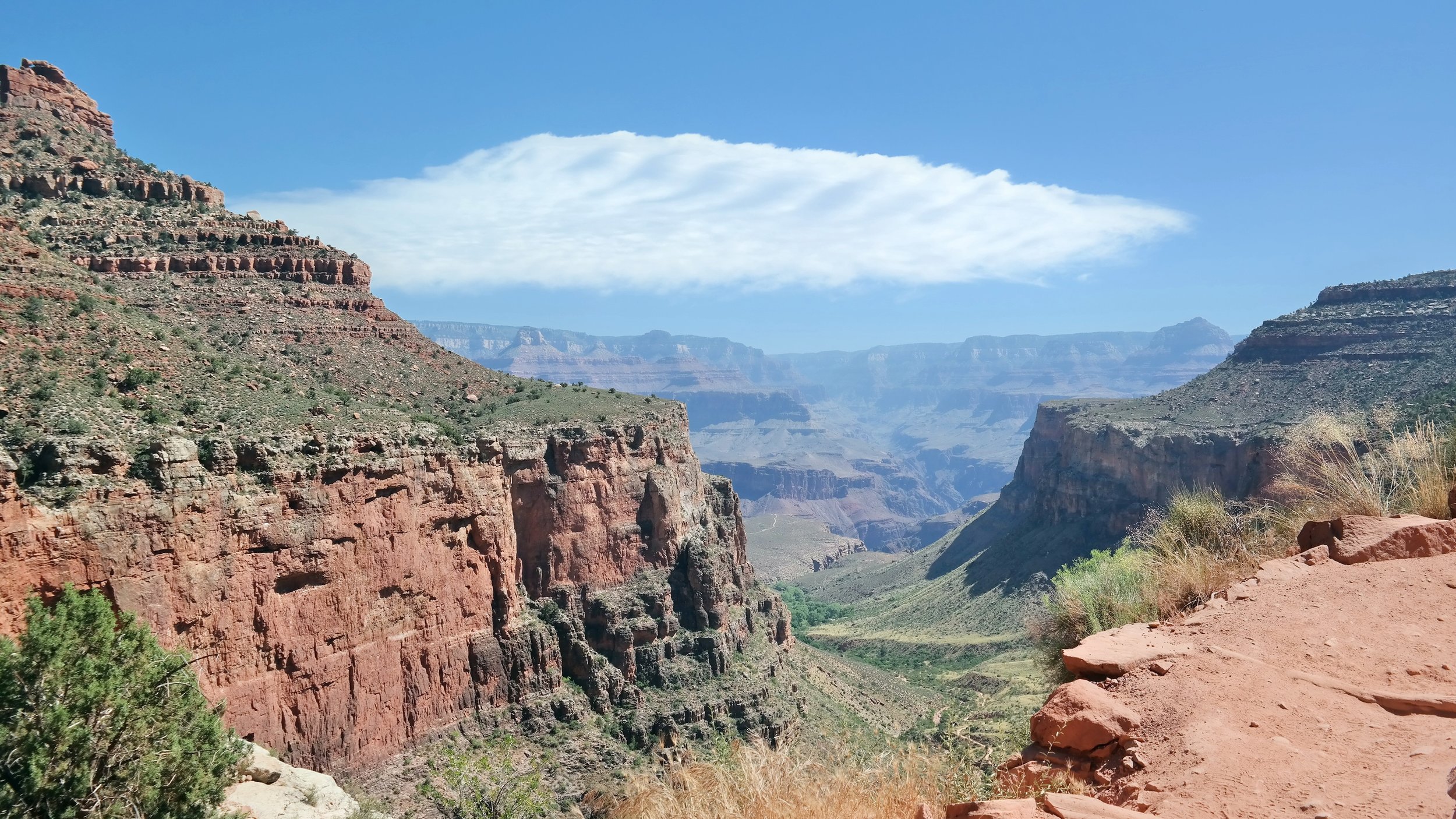The hike to Grinnell Glacier in Glacier National Park is one of the more enjoyable day hikes we have done. The trail offered a good workout and beautiful views that beg you to stop and stare. The hike starts at the Grinnell Glacier Trailhead in the Many Glacier section of the park and climbs 1,840 feet over 7.6 miles (11.4 roundtrip). It winds through alpine meadows and along a cliff face, offering views of Josephine Lake, Lower Grinnell Glacial Lake, and several waterfalls.
Once at the top, you can enjoy a panoramic view of Grinnell Glacier and Upper Grinnell Lake. The color difference between the upper and lower parts of Grinnell Lake is striking. You can content yourself with this view or you can climb down to the edge of the lake and over to the glacier. Walking on the glacier is not recommended but you can walk right up to the edge of it. We spent almost two hours at the top exploring and taking a lunch break. We even saw a few Bighorn sheep while we were walking around.
Summary
- 11.4 miles roundtrip.
- 1,840 feet elevation gain.
- Don't forget your bear spray!
- This trail is marked as strenuous although we saw hikers of many different fitness levels (including children) on the trail. I wasn't carrying a pack and my heart rate was definitely elevated but we didn't need to take any breaks on the way to the top.
- I highly recommend spending a decent amount of time at the top. Why would you climb all that way if you aren't going to stay a while to enjoy the view?
- Most of the hike was warm (we did our hike in August) but it was quite chilly at the top because of the elevation gain and wind coming off the ice. Bring a jacket if you plan on spending time at the top.
- If 11.4 miles sounds like too much, you can cut about 3.4 miles off if you take the shuttle boat starting at Many Glacier Hotel. There is a fee to ride the shuttle boat.
- Get to the trailhead early. This is a really popular day hike and is more accessible to the crowds that we expected it to be. We arrived at the trailhead around 10 am and were lucky enough to get one of the last spots in the trailhead parking lot. Parts of the trail were also pretty crowded and if we had started earlier we might have had a bit more solitude.





